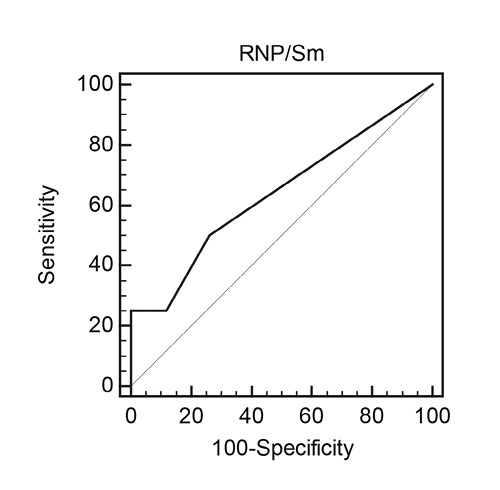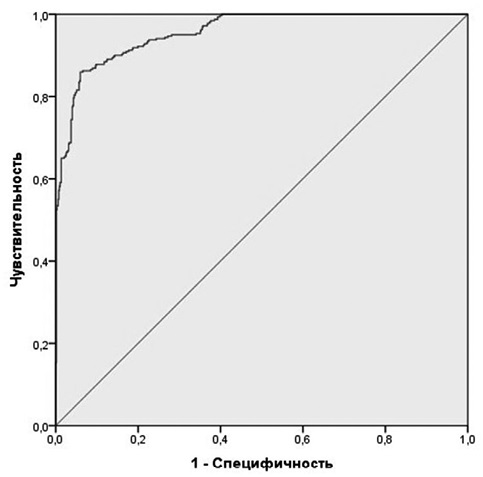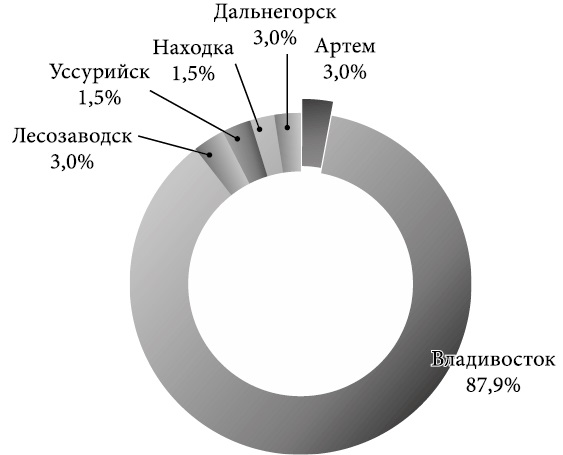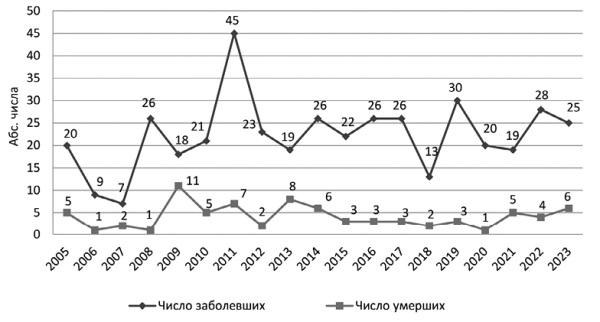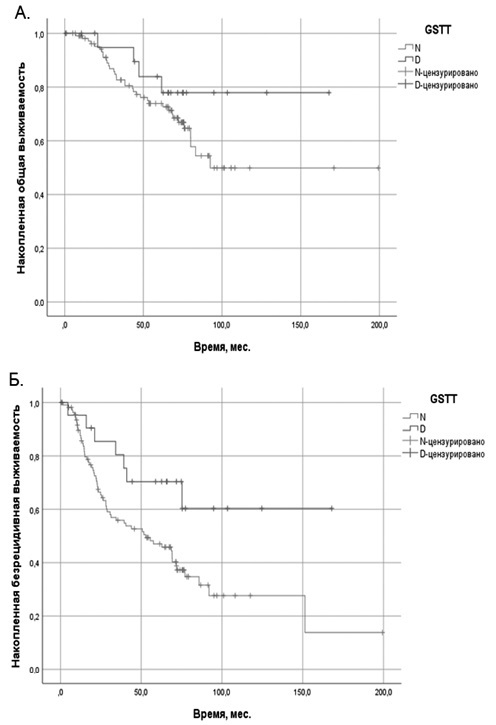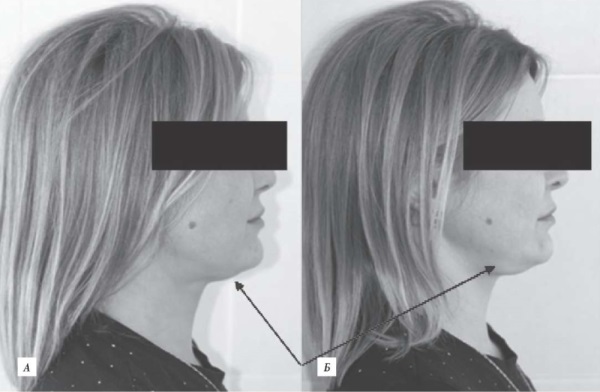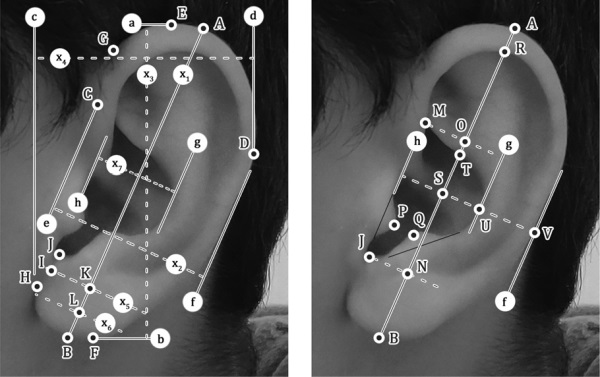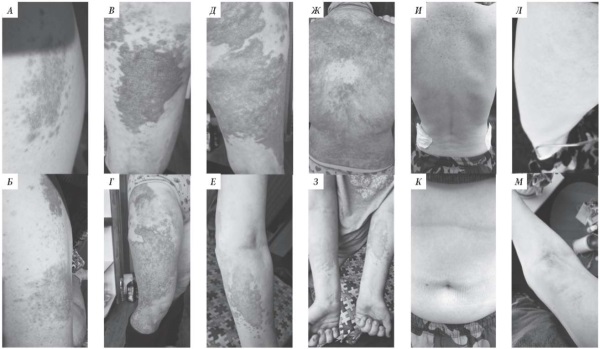EDITORIALS
Aim. To assess a correlation between conventional cardiovascular risk factors and unprovoked pulmonary volumes and flows.
Material and methods. The subjects (n = 153, median age 43 [32; 51] years) were divided into two groups depending on age. Questionnaires, anthropometry, biochemical blood analysis, spirometry without bronchodilation test, calculation of the lower limit of normal (LLN – low limit of normal) were carried out. Using the Mann – Whitney U-test, the two groups were compared quantitatively. When analyzing four-field conjugacy tables, a comparison was performed using the Pearson criterion χ2. The direction and closeness of the correlation were estimated using Spearman’s rank correlation coefficient. A predictive model was developed using the linear regression method. The differences were considered statistically significant at p < 0.05.
Results. In group I (median age 29 [26; 33] years), reliable connections were established between the volume of forced expiratory volume in one second and high-sensitivity C-reactive protein (hsCRP); modified Tiffno index (m-TI) and total cholesterol, lowdensity lipoproteins, glucose. When analyzing the LLN data, reliable associations between m-IT and glucose (p = 0.004), hsCRP (p = 0.011) were obtained. In persons over 40 years of age with a smoking index of more than 10 packs/year, a relationship was found between a decrease in LLN m-TI and LLN of forced expiratory flow between 25 and 75% of forced vital capacity and an increase in creatinine (p < 0.001) and lipoprotein (a) (p = 0.03), respectively.
Conclusion. There are differences in the relationship between the function of external respiration and laboratory indicators of cardiovascular risk in people before and after 40 years of age, which makes it possible to individualize the prediction of chronic non-communicable diseases.
REVIEWS
In this work, we carry out a literature review into the current knowledge of the rarest ophthalmic helminthoses, including approaches to their timely diagnosis and effective therapy. In terms of their rarity, ocular forms of helminthoses should be classified into relatively frequent forms, such as toxocarosis, and rarer forms, such as those with the infestation of the visual organ and the development of paragonimiasis and dirofilariosis. The epidemiology of ocular onchocerciasis in the Far East of the Russian Federation is not only exclusively imported, but also has an orphan prevalence. The lack of adequate biomicroscopic visualization of the causative agent of dirofilariasis is the main limiting factor in the management of these patients, which affects both diagnosis and treatment. The masquerade syndrome in the clinical course of paragonimiasis is a factor that prioritizes anamnestic findings, which are most often confined to the consumption of an additional host, most often improperly processed crayfish. Ophthalmologic and cerebral forms require radiologic imaging with detection of characteristic MRI patterns. At the current stage of medicine development, drug therapy is sufficient to resolve the pathologic process in ocular paragonimiasis. Ophthalmologists should carry out a more comprehensive assessment of the somatic status of each patient resistant to primary, often empirical, therapy in order to exclude parasitological causes.
ORIGINAL RESEARCHES
Objective. To determine, according to anthropometry, caliperometry, and dynamometry, the parameters determining individual physical development and somatotypes, as well as to identify their relationship with the strength of the respiratory muscles (RM) in the initial and clinically pronounced stages of chronic heart failure (CHF) with a preserved left ventricular ejection fraction.
Materials and methods. 58 patients of both sexes aged 45 to 72 years were examined. The patients were divided into two groups: the main group (patients with CHF) and the comparison group (patients without CHF). All patients underwent anthropometric measurements, caliperometry, and dynamometry. The strength of RM was determined. Statistical processing was carried out using nonparametric methods. The indicators were considered reliable at p < 0.05.
Results. When determining somatotypes, a high incidence of endomorphic type was revealed in patients with CHF with a preserved left ventricular ejection fraction. The indices of RM strength did not significantly differ in both groups. The analysis of anthropometry parameters revealed high values in patients with weakness of inspiratory and expiratory muscles in CHF with preserved left ventricular ejection fraction.
Conclusion. (1) Endomorphic somatotype was more common in patients with clinically pronounced CHF with preserved ejection fraction. (2) In the patients with CHF and RM weakness, the level of the N-terminal fragment of natriuretic cerebral propeptide was higher compared to the patients with CHF with a preserved fraction of the left ventricle with preserved RM strength (p = 0.05). (3) With an increase in the functional class of CHF, the tendency to decrease the strength of inspiratory muscles increases (F = 3,3; p = 0,027). (4) In all examined patients, a positive correlation was found between the strength of RM and the results of carpal dynamometry. In the CHF patients with preserved left ventricular fraction, anthropometry parameters correlated only with the maximum expiratory pressure (MEP), while those in patients without CHF correlated both with maximum inspiratory pressure (MIP) and MEP.
Objective. To assess the diagnostic value of antinuclear antibody (ANA) profiling in rheumatoid arthritis by immunoblotting.
Materials and methods. In total, 46 patients with rheumatoid arthritis (RA) with a mean age of 34.6 years (21.3–63.2) were observed. The disease duration was 11.2 years (3.7–19.8); the activity according to DAS 28 was 3.15 ± 1.36 (3.05–3.61) points. The RA diagnosis was based on generally accepted clinical guidelines. The control group included 28 patients with osteoarthritis. Laboratory examinations were conducted using a set of reagents to determine IgG antibodies to nuclear antigens by immunoblotting.
Results. The RA patients showed an increased level of antibodies to the RNP/Sm antigen, with its frequency being significantly higher than in the control group (p = 0.007). The most specific testomes for diagnosing RA were anti-RNP/Sm (specificity 96%, sensitivity 25%) and antibodies to the recombinant antigen (sensitivity 25%, specificity 88.1%). The method of ROC analysis found that the value of anti-RNP/Sm = 0 is the point corresponding to the optimal ratio of sensitivity/specificity. This value corresponds to a sensitivity of 50% and a specificity of 73.8%.
Conclusion. The studied laboratory tests, as a rule, showed high specificity, but rather low sensitivity. The most specific test for RA is anti-RNP/Sm. The conducted ROC analysis showed that the anti-RNP/Sm test has an average quality index for diagnosing RA.
Objective. To establish changes in the dentin biomineral ultrastructure of the lower incisor of white rats after a 60-day period of sodium benzoate (SB) injections and to substantiate the possibility of their correction with mexidol (MD) or thiotriazoline (TTZ).
Materials and methods. 175 male rats weighing 200–210 g were used. SB was injected at a dose of 100 mg/kg/day, MD at a dose of 50 mg/kg/day, and TTZ at a dose of 117.4 mg/kg/day. The dentin biomineral ultrastructure of the lower incisor was studied by XRD analysis.
Results. After a 60-day administration of SB, the crystallite sizes were larger than those in the control group from days 3 to 24 of readaptation by 6.06%, 7.88%, 6.58%, and 4.08%; the microtexturing coefficient (MC) from days 3 to 45 was lower by 8.23%, 6.53%, 8.12%, 6.77% and 4.90%. With the introduction of MD, dentin MC from days 10 to 45 exceeded the values of the control group by 2.75%, 3.31%, 3.64%, and 3.31%. With the introduction of TTZ, crystallite sizes from 3 to 15 days decreased by 3.87%, 5.23%, and 4.80%, and MC from 3 to 45 days increased by 2.76%, 3.43%, 3.83%, 4.09%, and 3.33%.
Conclusion. SB injections to experimental animals is accompanied by destabilization of the dentin biomineral of the lower incisors. The introduction of MD or TTZ mitigates changes in the dentin biomineral ultrastructure. The use of TTZ was shown to be more effective.
Aim. To develop a screening and prognostic algorithm for assessing the risk of retinal vein occlusion in patients with arterial hypertension under the conditions of geomagnetic disturbances.
Material and methods. In total, 1512 patients with arterial hypertension of 1–4 stages were examined. Within the period of three years, 391 patients developed retinal venous occlusions. The parameters of systemic and regional hemodynamics in these patients, as well as ocular microcirculatory function, were compared both in a magnetically calm environment and during geomagnetic disturbances. To simulate the response of microcirculatory bed to stress, a functional pharmacological instillation test with a 10% Irifrin solution was performed. To assess the geomagnetic situation, the Кр index was used, which objectively characterizes fluctuations of the Earth’s magnetic field over a 3h time interval. The International Classification of Кр values was used.
Results. For statistical analysis, 78 studied signs of systemic, regional hemodynamics, and microcirculation were selected. The prognostic significance of 30 studied signs was revealed. A training group (1434 people) and an examination group (78 people) were formed. Based on the training group, a predictive algorithm was formed. A number of regularities were established, which can be used to create a system for risk assessment of retinal vein thrombosis during geomagnetic disturbances in patients with hypertension. To determine the risk of retinal vein occlusion, a coefficient was developed. The algorithm showed the sensitivity and specificity of 89% and 94%, respectively.
Conclusion. A prognostic algorithm with high sensitivity and specificity for assessing the risk of occlusive lesions of the retinal veins during geomagnetic disturbances in patients with arterial hypertension is proposed.
Aim. To characterize imported cases of dengue fever in Primorsky Krai and to establish the clinical and epidemiological features of the disease.
Materials and methods. A retrospective clinical and epidemiological descriptive study was conducted. The material was 71 maps of an epidemiological survey of people sick with dengue fever for the period from 2012 to 2023, as well as 66 case histories.
Results. The peak incidence occurred in 2018, with the intensity of 0.78 per 100 thousand population. Since 2012, the cases of dengue fever had been reported every year, except for 2021–22. The import was carried out from the region of Southeast Asia, often from Thailand, mainly in the winter–spring period. The disease was characterized by an acute onset, a persistent fever for 7.1 ± 0.2 days, symptoms of general intoxication, and the appearance of maculopapular exanthema (97.0%). Dengue hemorrhagic fever in the structure of identified cases was 3.0%. Cytolysis (83.3%), leukopenia (72.7%), thrombocytopenia (60.6%), and lymphocytosis (72.2%) were observed in the blood test.
Conclusions. Considering the significant excess of the average incidence rate in the Russian Federation, the epidemiological situation regarding the import of dengue fever into the Primorsky Krai can be considered unfavorable. Diagnosis should take into account the clinical characteristics and morbidity risks of the disease.
Aim. Analysis of surgical indices during monoport thoracoscopic lobectomies in Sakhalin Regional Clinical Oncological Dispensary at different stages of mastering the technique.
Materials and methods. Case histories of 251 patients who underwent radical surgical treatment for lung cancer using monoport thoracoscopic access. Patients were divided into two groups: initial (109 patients) and advanced (142 patients). The average surgical time, number of complications and conversions were assessed.
Results. Mastering the technique leads to a statistically significant reduction in surgical time. The difference in other parameters, such as the number of postoperative complications and the percentage of conversions at different stages, tends to decrease.
Conclusion. Surgical indices improve as the team goes through the learning curve. The technique is adequate and reproducible for surgical treatment of patients with lung cancer.
Aim. To analyze the situation regarding manifestations of foodborne botulism in the Volgograd region in the 2005–2023 period.
Materials and methods. A retrospective analysis of 158 records of hospital patients with a diagnosis of foodborne botulism was carried out. The epidemiological data under analysis included transmission factors and outcomes. The clinical data under analysis were duration of the incubation period, severity of clinical manifestations at the time of admission and during the course of the disease, severity of changes in laboratory parameters, studies of biological material for the presence of botulinum toxin. Statistical data were processed using the MS Excel and Stastica 10.0 MS Office software packages.
Results. Predominant sporadic cases of botulism were identified. The leading factors of infection transmission and the predominant type of botulinum toxin in the Volgograd region in the period from 2005 to 2023 were determined.
Conclusion. Physicians and other specialists working in outpatient facilities and hospital emergency departments should maintain updated knowledge about this severe food bacterial poisoning.
Aim. To develop mathematical models for determining the probability of intrapelvic anastomoses of the superior gluteal artery (SGA) in males and females. Materials and methods. Numerical data for discriminant analysis were obtained as a result of studies on 132 unidentified male (aged 40 to 60 years) and 60 female (aged 35 to 74 years) corpses. The following methods were used: preparation, morphometry, injection of blood vessels, somatotyping, mathematical modeling. Results. The length and diameter of SGA in men and women were found to be statistically significant predictor variables for the linear discriminant function. When assessing the probability of intrapelvic anastomoses of SGA using the proposed mathematical model, its accuracy was found to be 93.8 and 91.7% for men and women, respectively. The assignment of each new case to a group of males with a high or low probability of having intrapelvic anastomoses can be calculated using the following formulas: y0 = -11.174 + 1.465x1 + 5.139x2 and y1 = -31.459 + 4.101x1 + 6.436x2, in groups of females – y0 = -99.896 + 1.821x1 + 2.964x2 and y1 = -103.737 + 3.685x1 + 3.493x2. Here, x1 is the SGA diameter for each new case and x2 is the SGA length for each new case. If y0 > y1, then the man or woman belongs to the group with a low probability of having intrapelvic anastomoses of the SGA. If y0 < y1, then the people belong to a group with a high probability of having similar intrapelvic collaterals. Conclusion. The developed mathematical models can be used to predict the presence or absence of intrapelvic anastomoses of SGA in males and females with sufficiently high accuracy.
Aim. To study the effect of deletion polymorphism of the GST genes (GSTT1, GSTM1) on chemotherapy (CT) efficacy in women diagnosed with breast cancer (BC) in the Primorsky Krai.
Materials and methods. The study involved 132 women with breast cancer aged 23 to 79 years (mean age 48 ± 13 years) who received chemotherapy treatment. The detection of deletion (null) genotypes of GSTM1 and GSTT1 was carried out using multiplex PCR followed by an analysis of the melting curves of the reaction products.
Results. Relapse-free survival (RFS) of BC patients with the “null” GSTT1 genotype was statistically significantly higher (116.7 months (9.6 years) versus 75.8 months (6.2 years)) than in patients with the “normal” GSTT genotype. Thus, in the case of the GSTT1“null” genotype, the risk of disease relapse decreased by 2.4 times (HR = 0.418, CI = 0.191–0.915, p = 0.024). Similar to GSTT1, the DFS of patients with the GSTM1 null genotype increased from 72.7 months (6 years) to 76.1 months (6.3 years). At the same time, the risk of disease relapse in carriers of the “null” GSTM1 genotype decreased by 1.7 times (HR = 0.596, CI = 0.369–0.964, p = 0.033) compared with that in carriers of the “normal” GSTM1 genotype.
Conclusions. Deletion polymorphism of the GSTT1 and GSTM1 genes has a significant impact on chemotherapy efficacy in breast cancer patients. Carriers of “null” genotypes demonstrated a higher RFS and a lower risk of developing disease relapse. Further research in this direction and validation of the data obtained may contribute to individualizing the treatment of breast cancer patients, optimizing chemotherapy regimens, and reducing the number of adverse events.
Aim. To evaluate the disease course, laboratory diagnosis, and treatment results of COVID-19 patients.
Materials and methods. In the period from January to December 2021, the moderate and severe COVID-19 forms complicated by polysegmental community-acquired pneumonia were monitored in 861 patients admitted to Stavropol Clinical City Hospital No. 3. Patients were assessed according to laboratory data, body mass index, concomitant diseases, gender, age, duration of inpatient treatment, and disease outcome.
Results. More than half of the COVID-19 patients were overweight and had concomitant diseases at the time of admission, which significantly worsened the course and prognosis of the disease. The inflammation predictors (C-reactive protein, procalcitonin, fibrinogen, D-dimer, lactate dehydrogenase) were found to have an important role, with their indicators correlating significantly with the severity of the patient’s condition. Dynamic monitoring of these laboratory parameters served as a marker of the adequacy of the therapy; however, these were not always a criterion for prescribing antibacterial therapy. Bacteriological diagnostics was applied only in 9.4% of cases.
Conclusion. Although the COVID-19 severity was not associated with gender, it correlated significantly with age and the presence of comorbid cardiovascular, bronchopulmonary, and endocrine diseases. A retrospective analysis revealed characteristic laboratory markers of the severity of COVID-19 infection. It was revealed that the initial empirical ABT was initiated in 94% of cases in the absence of reliable objective signs of bacterial infection.
Objective. To evaluate the efficacy of 3% sodium tetradecyl sulfate in the foam form in treating patients with venous malformations (VMs) of the maxillofacial region.
Materials and methods. In total, 30 patients with VMs of the maxillofacial region were included in the study. The patients were divided into three groups: (1) patients with a small VM size of up to 2 cm in diameter; (2) patients with an average VM size from 2 to 6 cm in diameter; (3) patients with a large VM size above 6 cm in diameter. In the treatment of patients, a foam form of 3% sodium tetradecyl sulfate was used.
Results. All patients were treated without intraoperative and postoperative bleeding. According to the results of the study, large VMs decreased in size by an average of 49.7%, medium malformations decreased by an average of 68.1%, while small malformations decreased by 69.6%.
Conclusion. Sclerosing of venous malformations of the maxillofacial region with a foam form of 3% sodium tetradecyl sulfate is an effective, affordable, and safe treatment method.
Aim. To identify somatotypological features of linear parameters and bilateral dimorphism of the auricles in adolescent males.
Materials and methods. In total, 140 adolescent males (19.05 ± 0.71 years) in the Lugansk People's Republic were examined. Following somatotyping and cephalotyping, the left and right auricles were photographed. Digital photographs were uploaded to the ImageJ software, which was used to determine 20 sizes of the auricle. An ANOVA analysis of the obtained results was carried out. The index of bilateral dimorphism of each auriculometry parameter was determined.
Results. All studied parameters of the left auricle, except for its width, exceeded those of the auricle of the contralateral side.
Conclusion. The highest values of the bilateral dimorphism index were observed when studying the height of the tragus and antitragus in males, regardless of their cephalotype.
Aim. To analyze the applicability of ultrasonography in gynecomastia diagnosis.
Materials and methods. The study included 119 males aged 18 to 74 years with complaints of a lump in the projection of the areola, and/or pain/discomfort in the breast gland area. All the patients underwent an ultrasound examination (US) of the breast. In 112 (94.05%) patients, US revealed changes typical of gynecomastia. All patients were divided into three age groups: 18–44 years (n = 99), 45–59 years (n = 15), 60–74 years (n = 5).
Results. Out of 112 cases, 97 and 15 were identified as gynecomastia and pseudogynecomastia, respectively. The highest incidence of gynecomastia was observed in the first age group, with peaks at 24–26 and 30–32 years. Gynecomastia was more often defined as bilateral (67%); unilateral gynecomastia was found in 21.6% and 11.4% of cases on the left and right breast, respectively. The average diameter of the glandular disc was not statistically different in the studied groups (p > 0.05, p = 0.5), while the thickness of the glandular layer was statistically significantly different and increased with age (p ≤ 0.05). The symptoms of true gynecomastia included: in 22 cases, pain and/or discomfort in the breast; in 37 cases, an increase in size; and in 38 cases, a combination of symptoms. Subcutaneous mastectomy on both sides was performed in 21 patients. Histologically, the fibrous stage of gynecomastia predominated in 85.7% of cases (n = 18), the intermediate stage accounted for 9.5% of cases (n = 2), and the flowering stage was noted in 4.8% of cases (n = 1). The US diagnostic efficacy was determined as follows: specificity 100%, accuracy 96.3%, and sensitivity 95.45%.
Conclusion. Ultrasound examination is an accessible, non-invasive, and safe diagnostic method for patients with suspected breast pathology.
Aim. To evaluate the efficacy and safety of favipiravir and remdesivir in the infectious disease hospital of the Volgograd region in 2022.
Materials and methods. In total, 559 medical records of patients prescribed favipiravir or remdesivir in 2022 were studied. Long-term results of the drug use and disease outcomes after discharge or transfer to another medical institution were assessed using the Federal registry of people with COVID-19.
Results. Favipiravir was more frequently prescribed in mild cases of the disease. After excluding patients without signs of lung injury from the analysis, there were no significant differences in mortality and improvement. Patients receiving favipiravir had lower odds of ALT elevations above 5 upper limits of normal and developing drug-induced liver injury with a possible RUCAM score compared with patients receiving remdesivir (OR = 0.40, 95CI 0.20–0.80 and OR = 0.30, 95 CI 0.08–1.08).
Conclusion. The limited experience of the use of favipiravir for COVID-19 necessitates further research into its efficacy and safety, particularly when prescribing warfarin and high doses of direct anticoagulants simultaneously.
Aim. To analyze the dynamics of the application of medical and organizational technologies for achieving the target reduction of mortality from acute coronary syndrome (ACS) in the region.
Materials and methods. In 2018, the research covered 1 regional vascular center (RVC), 8 primary vascular departments (PVD), and 41 medical organizations (MO). In 2022, the structure of medical organizations changed to include 3 RSCs, 9 PSOs, and 39 MOs. The indicators characterizing the provision of medical care to ACS patients in the Irkutsk region were calculated and analyzed. The presence, direction, and strength of correlation between the number of deaths from ACS and the number of medical and organizational activities was studied using linear correlation analysis by the Pearson method.
Results. Over time, the share of hospitalization of patients with ACS in the early stages up to 12 hours increased from 42.1% to 46.5%. The mortality rate from ACS decreased by 20.4%, primarily due to a decrease in mortality in the first 24 hours (by 28.7%). The key medical and organizational technologies that have the greatest impact on mortality rates were identified. A strong relationship (r = -0.729) was established between the number of deaths from ACS and the number of patients transferred to the regional vascular center for emergency coronoplasty; two medium-level relationships (r = -0.343) were found between the number of deaths from ACS and the number of hospitalized patients with ACS in the first 12 hours; a correlation (r = -0.415) was determined between the number of deaths from ACS and the number of hospitalized patients who underwent thrombolytic therapy. The linear regression method showed that the availability of such procedures as emergency coronoplasty and thrombolytic therapy has prognostic significance for further reduction of the expected number of deaths from ACS in the region.
Conclusion. The creation of the RVC and PVD infrastructure in the region allowed the major indicators of the “Combating Cardiovascular Diseases” regional program to be achieved.
Aim. To assess the medical and statistical indicators of the health status of persons with the disease caused by the human immunodeficiency virus (HIV), among suspects, accused, and convicts held in institutions of the penal system. To develop proposals for improving work in the field of countering the spread of HIV infections.
Materials and methods. The structure and dynamics of morbidity and mortality from HIV infection in penal institutions from 2014 to 2022 was analyzed using official statistical data. Calculations were carried out using MS Excel application packages and the R software environment version 3.6.2.
Results. The peak HIV incidence in penal system institutions was recorded in 2015, followed by its gradual decrease by 2020. HIV mortality decreased by 52.1% since 2014, amounting to 84.6 per 100,000 people in 2022. The mortality rate of people living with HIV (PLHIV) decreased by 61.5% in 2014. This dynamics showed a decreasing trend starting from 2015. The antiretroviral therapy coverage in this group of patients reached a maximum value of 94.5% by 2022.
Conclusions. The HIV mortality and mortality rates during the study period show a downward trend. The antiretroviral therapy coverage in 2022 reached a historic maximum. However, this does not exclude the low adherence of patients to treatment, which indicates the need to develop new methods of sanitary education and therapeutic and preventive work in penal system institutions.
PRACTICE OBSERVATIONS
Paraneoplastic syndromes, including paraneoplastic dermatoses, represent a pressing problem for dermatovenereologists, infectious disease specialists and therapists due to the necessity of having broad knowledge in related disciplines. Our article examines a clinical case of the onset of paraneorplastic polydermatomyositis against the background of a new coronavirus infection in a patient with exacerbation of paranoid schizophrenia. When paraneoplastic syndrome manifested itself in this clinical situation, a differential diagnostic search was carried out at the junction of several nosological units, such as the locomotor primary latent form of brucellosis, trichinosis, polydermatomyositis, and steroid myopathy. Taking into account the epidemiological history and the fact of the patient’s residing in a rural area, it was first necessary to exclude the infectious nature of these manifestations, as well as autoimmune pathology involving muscles and skin. A wide range of laboratory and instrumental examination methods were carried out, including false-positive IgM results for the causative agent of brucellosis, which can be explained within the framework of paraneoplastic syndrome and the tumor’s synthesis of biologically active substances. The results formed the basis for the entire clinical picture of the disease. Identification of the oncological process, which became possible with the appearance of pathognomonic clinical symptoms, made it possible to establish the histological picture of the disease and to launch treatment for this patient. In addition, the final clinical diagnosis was complicated by the presence of an underlying disease that required constant use of antipsychotics and the lack of control of the ongoing basic pharmacotherapy in the form of monitoring prolactin levels and assessing the general condition of the body systems.



